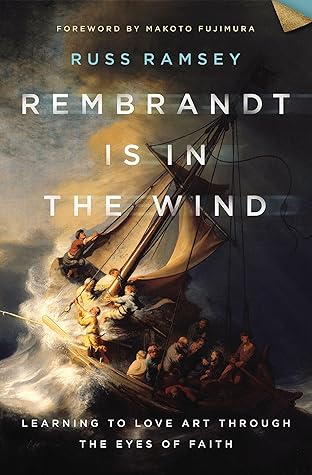More on this book
Community
Kindle Notes & Highlights
by
Russ Ramsey
Read between
April 16 - May 27, 2023
Henri Nouwen wrote in The Return of the Prodigal Son, “Our brokenness has no other beauty but the beauty that comes from the compassion that surrounds it.”
It is hard to render an honest self-portrait if we want to conceal what is unattractive and hide what’s broken. We want to appear beautiful. But when we do this, we hide what needs redemption—what we trust Christ to redeem. And everything redeemed by Christ becomes beautiful.
Three properties of being that transcend the capacities of all other creatures, known as transcendentals, have risen to the surface: the human desire for goodness, for truth, and for beauty.
Because these are three properties that define God’s nature. Good and evil point to the reality of undefiled holiness. Honesty and falsehood point to the existence of absolute truth. Beauty and the grotesque whisper to our souls that there is such a thing as glory.
Without beauty, truth and goodness lie flat, and they were not meant to. They were meant to be adorned. They were meant to be attractive.
Or he could paint with fluid, dynamic, unrestrained brushstrokes and give the viewer the impression of a horse in the wild, coiled in fear. The impression of the horse seemed more alive—a truer horse than the realistic portrait. Though he did not know it, Delacroix and others like him were inspiring the development of a new genre of art: Impressionism.
We live in communities that need goodness, truth, and beauty. And we play a role in advancing those transcendentals that make us human. We are to curate them for others. We play a role in blowing on the embers of “whatever is noble, whatever is right, whatever is pure, whatever is lovely, whatever is admirable.”19 Whatever is excellent or praiseworthy, think about such things—and be a part of them.
And feeling as though she is forcing a sort of disconnection when she at last pulls herself away, she vows to remember the piece—to carry it with her in the recesses of her heart. And she does. The work never again appears to her as an ordinary piece of art, but as part of her own collection.
I love the idea of each eternal soul that has the capacity to collect and curate our own personal collection of art. What other creature holds a place for remembering the beautiful? While we humans share in this journey of collecting, we each are moved to select different pieces. Visions that uniquely speak to the individual and says to something to them, while simultaneously saying something about them.
Art has always been a means of shaping hearts and minds. Paintings showing the transmission of culture and education from one generation to the next “enabled him to symbolically construct forms of kinship that were both familiar and yet strange to viewers.”
Tanner didn’t just want people to see the Black families in his community; as an artist and a Christian, he wanted to show them Black families as they really were. He wanted to replace the blunt resignation of prejudice with the humble power of curiosity.
It is the potential of the story, not the absence of one, that draws us to Hopper’s work because as human beings, if there’s one thing we know instinctively, it’s that there must be a story. Everything has a story. Everyone has a story. And every story is, in some way, sacred.
Lily came to believe that God’s gifts were not meant to be an end in themselves but were intended to prepare followers of Jesus for a life of service to others. She wrote, “We ourselves are saved to save. We are made to give, to let everything go if only we may have more to give. The pebble takes in the rays of light that fall upon it, but the diamond flashes them out again. Every facet is means, not simply for drinking more in, but for giving more out. A flower that stops short of its flowering misses its purpose.”6
Ruskin believed “the greatest thing a human soul ever does in this world is to see something and tell what it saw in a plain way . . . To see clearly is poetry, prophecy, and religion—all in one.”14 He and Lilias shared the ability to look and see what was there and convey to others what they saw.
The mastery of something leads to a greater enjoyment of it.
Mastery doesn’t just produce stories. It considers how to tell them and occasionally even provides new language when there are no words.
They are like the picture of the Dawn Treader that sucked the Pevensies and Eustace into an adventure whose goal was to reach the end of everything in the hopes that Aslan would be all that remained.5


